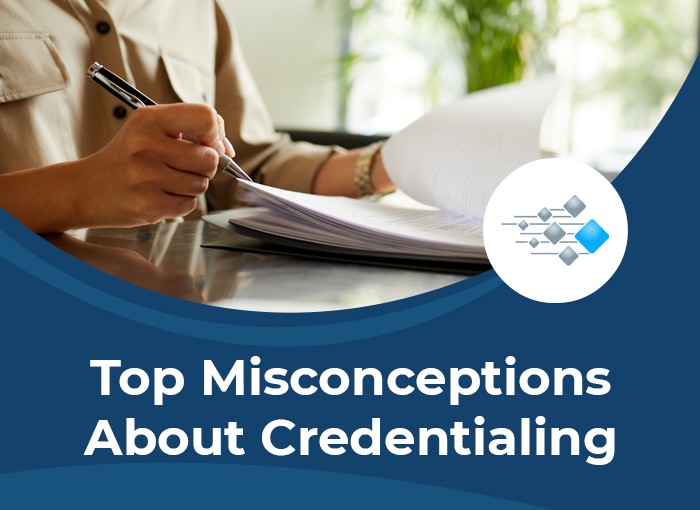Top Misconceptions About Credentialing
Credentialing is one of the most sought payer participation processes. It helps health providers get included as an ‘in network’ provider for the patients. So, every time a provider seeks new privileges or changes employers, credentialing tops the ‘to-do’ list.
For residents and fellows who are wrapping their training, credentialing services for providers is one of the primary steps to kickstart as a practicing provider. The entire process of verifying and assessing the provider’s education has its undeniable benefits.
Medical credentialing allows the patients to trust their provider and makes them comfortable knowing that they are in good hands. It also helps the providers trust their peers and plays a vital role in the provider health plan enrollment, enabling the collection of payment for the offered services.
But just like many other services, medical credentialing is often misunderstood. There are so many myths and fallacies associated with the process that it has started sounding like an urban legend. So let us debunk some of the myths and unveil the truth.
Credentialing is not a part of your revenue cycle.
A decade ago, the revenue cycle mostly referred to claim processing and payment collection. Now, the cycle has taken center stage, and it now captures a broad picture by including the contributions made to the revenue by providers, medical staff, or payer enrollment administration.
If you describe the revenue cycle today, it will include medical and administrative operations that are important to the collection, administration, and collection of patient service fees. The process now includes primary source verification, medical credentialing, enrollment, etc., that contribute towards the road of profit.
You are credentialed for life.
Let us say a provider has finally made its way into the network. It takes a reasonable amount of time and paperwork, and they have made it to the goal. What now? The provider now needs to maintain ‘approved status’ as credentials are cautiously and continuously monitored by the companies the provider is credentialed with.
The process is ongoing, and there is no one-time solution. Providers need to re-credential with the entities at intervals. These intervals can vary from two years or three, and a provider can always refer to the payer’s rules to maintain the approved status.
It is just one application for all of the credentialing needs.
Efforts have been made to streamline payer credentialing. There are also some states with state-mandated credentialing applications. Yet, many institutions have applications that are a part of their credentialing requirements.
Every institution has its way to go about medical credentialing, and the provider needs to check with each institution to determine the best possible way to complete the paperwork.
I have provided my documents. My credentialing has to be approved.
Credentialing is meticulous and, in some cases, overwhelming for a reason. The process has multiple steps to it, and it requires various levels of approval for your credentialing application to get approved.
The time limit can vary. Many entities take up to four to six months to finalize the process. It all comes down to how efficiently you can follow up.
I have been a provider all my life. I do not need credentialing.
Yes, you do. You will need to get credentialed to help your patients and your practice. Unless you are a specified provider and your specialty is excluded from credentialing as deemed suitable by the health plan (which is the rarest of the rare exceptions).
To stay relevant in the revenue cycle process, every provider must comply with the credentialing and re-credentialing requirements.
Conclusion
Medical Credentialing can be time-consuming and costly. If you do not have experts who know their ways, in and out, you might end up spending weeks, even months, to complete the process. Even then, the outcome might not be positive. However, you can get credentialed without losing revenue or time by partnering with Capline. We will make sure that you do not have any pile of paperwork to take care of and that you stay in the network all the time.




